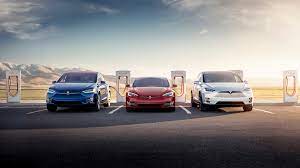Electric cars have revolutionized the automotive industry, providing a sustainable and eco-friendly alternative to traditional gasoline-powered vehicles. These vehicles rely on electricity to power their engines, but have you ever wondered, “How many volts is an electric car?” In this article, we will delve into the electrical power behind electric cars, shed light on the voltages they use, and explore the technology that drives the future of green mobility.
Understanding the Electrical System of Electric Cars
To comprehend the voltage aspect of electric cars, we must first understand their electrical system. Electric cars are equipped with a complex system of components, which includes a battery pack, an electric motor, and various control electronics. The heart of an electric car’s electrical system is its battery pack.
How Many Volts Is An Electric Car Battery?
The voltage of an electric car battery is a critical component of its performance. The voltage of an electric car battery typically ranges from 400 to 800 volts. However, this can vary depending on the make and model of the electric vehicle. The voltage is crucial because it determines the amount of electrical power that the battery can deliver to the electric motor.
The voltage of an electric car battery is significantly higher than the voltage of a traditional lead-acid car battery, which is typically 12 volts. The higher voltage of electric car batteries allows them to store and deliver more energy, making them suitable for powering an entire vehicle.
Why Do Electric Cars Use Higher Voltages?
Electric cars use higher voltages primarily to increase efficiency. Higher voltage allows for the use of thinner and lighter electrical cables, reducing weight and energy loss. Additionally, high-voltage systems can provide more power to the electric motor, resulting in better acceleration and overall performance. This is why electric car manufacturers opt for higher voltage battery systems.
Read too:
Components of the Electrical System
Electric cars’ electrical systems consist of several key components that work together to power the vehicle:
- Battery Pack: The battery pack is the energy storage unit of an electric car, and its voltage is essential for the vehicle’s operation. It is made up of multiple individual battery cells connected in series to achieve the desired voltage.
- Electric Motor: The electric motor is responsible for converting electrical energy from the battery into mechanical energy to drive the vehicle. The voltage supplied to the motor directly affects its power output and performance.
- Inverter: The inverter is a crucial component that converts the direct current (DC) from the battery into alternating current (AC) for the electric motor. It controls the speed and direction of the motor and plays a key role in voltage regulation.
- Charging System: Electric cars also include a charging system that allows them to recharge their batteries from external power sources. The voltage used during charging can vary, but it is typically around 240 volts for home charging stations.
Safety Measures and High Voltages
Electric cars operate at high voltages, which can pose safety concerns. To ensure the safety of occupants and first responders, electric cars are equipped with safety systems that include:
- High Voltage Disconnect: Electric cars have a high voltage disconnect feature that isolates the battery in case of an accident or emergency, reducing the risk of electric shock.
- Warning Labels: High-voltage components are marked with warning labels, and emergency responders are trained to identify and handle electric vehicles safely.
- Insulation and Encapsulation: High-voltage components are insulated and encapsulated to prevent contact with electrical elements.
Future Innovations in Electric Car Voltages
As electric vehicle technology continues to advance, there are ongoing efforts to improve battery performance and efficiency. This includes exploring higher voltages and new materials for batteries. Some manufacturers are researching solid-state batteries, which could potentially operate at even higher voltages and offer greater energy density, leading to longer driving ranges and faster charging times.
Read too:
Conclusion
So, to answer the question, “How many volts is an electric car?” electric cars typically operate with voltages ranging from 400 to 800 volts. This voltage is essential for powering the vehicle and its electric motor efficiently. Higher voltage systems lead to better performance and overall efficiency, making electric cars a viable and sustainable transportation option.
As the automotive industry continues to innovate and develop new technologies, we can expect electric cars to become even more efficient and environmentally friendly. Electric cars are not just a mode of transportation; they represent a significant step towards a greener and more sustainable future.
In a world where environmental concerns are paramount, electric cars and their high-voltage systems play a crucial role in reducing our carbon footprint and creating a cleaner planet.
